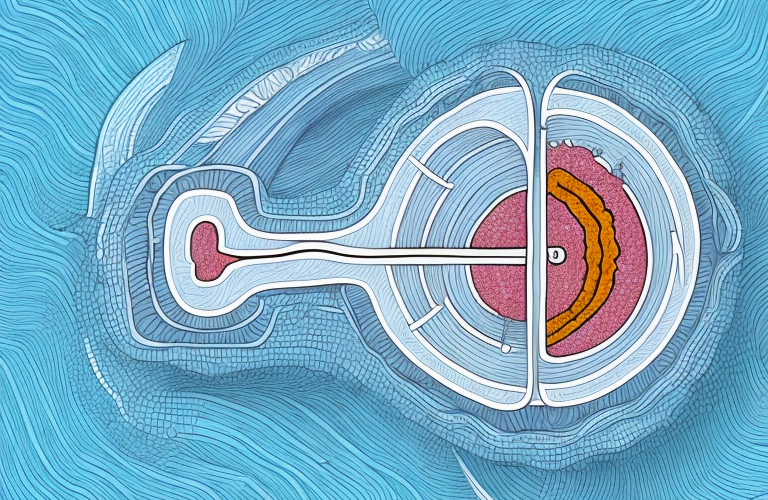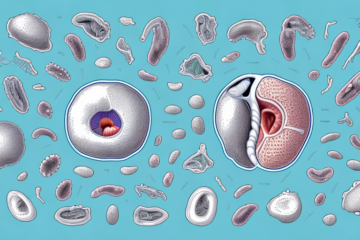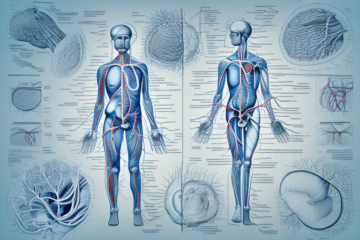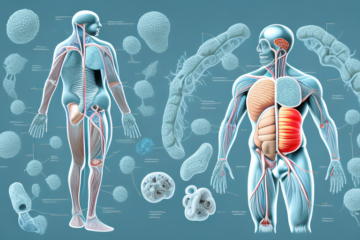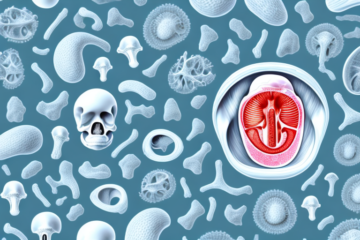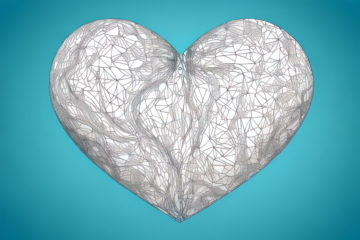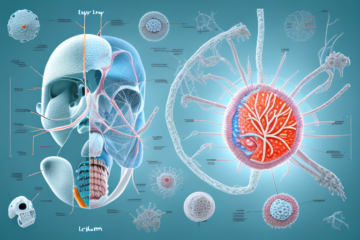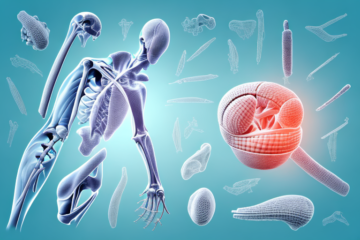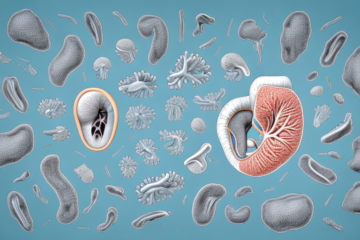Veins play an essential role in the circulatory system, carrying blood back to the heart from organs and tissues throughout the body. They are one of the most important components of the blood-delivery network, and a malfunctioning vein can lead to serious health problems. In this article, we will dive deep into the anatomy, function, and common issues associated with veins, as well as the latest treatments and best practices for promoting healthy veins.
Understanding the role of veins in the body
Veins are responsible for transporting blood from the capillaries, which are the smallest blood vessels in the body, back to the heart. Because of this, they play a critical role in maintaining healthy circulation and ensuring that organs and tissues receive the nutrients and oxygen they need to function properly. Veins work in conjunction with the arteries, which carry oxygen-rich blood from the heart to the body’s extremities.
However, veins can also be prone to certain health issues, such as varicose veins and blood clots. Varicose veins occur when the veins become enlarged and twisted, often causing discomfort and swelling. Blood clots can form in the veins, which can be dangerous if they travel to the lungs or brain. It is important to maintain good vein health by staying active, maintaining a healthy weight, and avoiding prolonged periods of sitting or standing.
The differences between veins and arteries
While veins and arteries are similar in many ways, there are a few crucial differences. Arteries carry oxygenated blood away from the heart, while veins carry deoxygenated blood back to the heart. Additionally, veins have thinner walls and less muscular tissue than arteries, allowing them to expand more easily and accommodate changes in blood flow.
Another key difference between veins and arteries is the presence of valves. Veins have valves that prevent blood from flowing backwards, while arteries do not. This is because the pressure of blood flow in arteries is higher than in veins, so there is no need for valves to prevent backflow.
Veins also play an important role in regulating body temperature. When the body is too warm, blood vessels in the skin dilate, allowing more blood to flow through the skin and release heat. This process is known as vasodilation and is controlled by the nervous system. Conversely, when the body is too cold, blood vessels in the skin constrict, reducing blood flow and conserving heat. This process is known as vasoconstriction.
The anatomy of veins: a detailed breakdown
Veins are composed of several layers, including an innermost lining called the endothelium, a middle layer of smooth muscle, and an outer layer of connective tissue. The valves in veins also play a critical role in ensuring that blood flows in only one direction.
Veins are responsible for carrying deoxygenated blood back to the heart, where it can be re-oxygenated and pumped back out to the body. This process is essential for maintaining proper circulation and delivering nutrients and oxygen to all parts of the body.
Veins can vary in size and shape depending on their location in the body. Some veins, such as those in the legs, can become enlarged and twisted, leading to varicose veins. This condition can cause discomfort and swelling, and in severe cases, may require medical treatment.
Variations in vein structure and function across the body
While the basic structure of veins is similar throughout the body, there are variations in size, shape, and function depending on their location. For example, the veins in the legs are much larger and have more valves than those in the arms, and veins in the lungs and liver have a unique structure that allows them to filter blood and remove toxins.
Additionally, veins in the brain have a unique structure that allows them to regulate blood flow and maintain proper oxygen levels. These veins are surrounded by a network of cells called astrocytes, which help to control blood flow by releasing chemicals that cause the veins to constrict or dilate. This is important for maintaining proper brain function and preventing damage from lack of oxygen.
How veins transport blood back to the heart
Veins rely on several mechanisms to move blood back to the heart, including contractions of the smooth muscle surrounding the veins, the action of nearby muscles, and the pressure created by inhaling and exhaling. Additionally, the valves in veins prevent blood from flowing backward and help maintain a steady flow in one direction.
It is important to note that the process of blood returning to the heart through veins is not always smooth. Factors such as prolonged sitting or standing, obesity, and pregnancy can lead to decreased blood flow and increased pressure in the veins, causing them to become swollen and twisted, a condition known as varicose veins. In severe cases, varicose veins can cause pain, discomfort, and even ulcers. Treatment options include lifestyle changes, compression stockings, and in some cases, surgery.
The importance of healthy veins for overall health and wellness
Healthy veins are essential to maintaining proper circulation and ensuring that organs and tissues receive the nutrients and oxygen they need to function properly. Issues such as varicose veins and chronic venous insufficiency can significantly impact day-to-day life and lead to more serious health problems if left untreated.
There are several ways to maintain healthy veins, including regular exercise, maintaining a healthy weight, and avoiding prolonged periods of sitting or standing. Additionally, compression stockings can help improve circulation and prevent the development of varicose veins. It is important to consult with a healthcare professional if you experience any symptoms of vein issues, such as swelling, pain, or discoloration.
Common vein-related conditions, such as varicose veins and spider veins
Varicose veins and spider veins are two of the most common vein-related issues. Varicose veins are swollen, twisted veins that can occur in any part of the body, but often affect the legs and feet. Spider veins, on the other hand, are smaller, reddish or bluish veins that often appear on the face or legs. While these conditions are generally benign, they can be unsightly and cause discomfort.
Other vein-related conditions include deep vein thrombosis (DVT), which is a blood clot that forms in a deep vein, usually in the leg. This can be a serious condition that requires medical attention. Chronic venous insufficiency (CVI) is another condition that can occur when the valves in the veins are damaged, causing blood to pool in the legs and feet. This can lead to swelling, pain, and skin changes. It is important to seek medical advice if you experience any symptoms of vein-related conditions.
Treatment options for vein-related issues, including lifestyle changes, medication, and surgery
While lifestyle changes such as exercise, weight loss, and avoiding prolonged sitting or standing can help improve vein health, more severe conditions may require medical treatment. Medications, compression stockings, and surgery are all options for treating vein-related issues, and a doctor can help determine the best course of action based on the individual’s needs.
One common medication used to treat vein-related issues is anticoagulants, which help prevent blood clots from forming. Another medication option is sclerotherapy, which involves injecting a solution into the affected vein to cause it to collapse and eventually fade away.
In some cases, surgery may be necessary to treat vein-related issues. One surgical option is vein stripping, which involves removing the affected vein through small incisions. Another option is endovenous laser treatment, which uses laser energy to close off the affected vein.
Tips for maintaining good vein health and preventing vein-related problems
Maintaining good vein health is key to preventing vein-related issues. Some tips for doing so include getting regular exercise, maintaining a healthy weight, avoiding prolonged sitting or standing, wearing compression stockings, and avoiding tight clothing that constricts blood flow.
In addition to the above tips, it is also important to elevate your legs whenever possible to improve blood flow and reduce swelling. This can be done by propping your legs up on a pillow or footrest while sitting or lying down.
Another way to maintain good vein health is to stay hydrated by drinking plenty of water throughout the day. This helps to keep your blood flowing smoothly and prevents it from becoming too thick or sticky.
Myths and misconceptions about veins and their functions
There are several myths and misconceptions about veins and their functions. For example, many people believe that crossing their legs can cause varicose veins, but this is not true. Similarly, while age and genetics can play a role in vein-related issues, lifestyle factors such as diet and exercise are also critical to vein health.
Another common misconception is that all veins are blue in color. In reality, veins can appear blue, green, or even red depending on their depth and the amount of oxygen they are carrying. Additionally, not all veins are visible on the surface of the skin. Some veins, such as deep veins, are located within the muscles and cannot be seen.
Innovative technologies and breakthroughs in vein-related treatments
There have been several recent breakthroughs in vein-related treatments, including laser therapy, radiofrequency ablation, and ultrasound-guided sclerotherapy. These treatments can be incredibly effective at addressing vein-related issues with less risk, less pain, and faster recovery times than traditional surgery.
One of the most promising new technologies in vein-related treatments is endovenous microwave ablation. This minimally invasive procedure uses microwave energy to heat and close off problematic veins, without the need for incisions or general anesthesia. Studies have shown that endovenous microwave ablation can be just as effective as traditional surgery, with fewer complications and a quicker recovery time.
How to spot potential vein-related issues early on
Recognizing potential vein-related issues early on is key to getting effective treatment and avoiding more serious health problems. Symptoms to watch out for include swelling, discoloration, pain, and aching or cramping in the legs.
Another symptom to watch out for is the appearance of spider veins or varicose veins. These are often a sign of underlying vein issues and should be evaluated by a medical professional. Additionally, if you have a family history of vein problems or have a job that requires prolonged sitting or standing, you may be at a higher risk for developing vein-related issues.
To prevent vein-related issues, it is important to maintain a healthy weight, exercise regularly, and avoid prolonged periods of sitting or standing. Wearing compression stockings can also help improve circulation and prevent vein issues from developing. If you do notice any symptoms or have concerns about your vein health, it is important to consult with a medical professional for proper evaluation and treatment.
Understanding the risks associated with untreated vein problems
If left untreated, vein-related problems can lead to more serious health issues in the future. For example, chronic venous insufficiency can lead to skin ulcers, while deep vein thrombosis can cause blood clots that can be life-threatening if they travel to the lungs.
It is important to note that vein problems can also cause discomfort and affect your quality of life. Varicose veins, for instance, can cause pain, swelling, and aching in the legs, making it difficult to stand or walk for long periods of time. Additionally, spider veins can be unsightly and cause self-consciousness in some individuals. Seeking treatment for vein problems can not only prevent more serious health issues but also improve your overall well-being.
Advice for managing pain and discomfort related to vein issues
If you are experiencing pain or discomfort related to vein issues, there are several steps you can take to manage symptoms. Elevating the affected area, applying heat or ice, and taking pain medication can all help alleviate discomfort, but it is always best to consult with a doctor to determine the underlying cause of the pain.
In conclusion, veins are a critical component of the circulatory system, playing a key role in maintaining healthy blood flow and ensuring that organs and tissues receive the nutrients and oxygen they need to function properly. By understanding the anatomy of veins, recognizing potential issues early on, and taking steps to maintain good vein health, individuals can protect their overall health and avoid more serious vein-related issues down the road.
Another way to manage pain and discomfort related to vein issues is to wear compression stockings. These stockings help improve blood flow and reduce swelling, which can alleviate pain and discomfort. Additionally, regular exercise and maintaining a healthy weight can also help improve vein health and reduce the risk of developing vein-related issues.
It is important to note that some vein issues may require medical treatment, such as surgery or minimally invasive procedures. These treatments can help address underlying issues and improve overall vein health. It is important to consult with a doctor if you are experiencing persistent pain or discomfort related to vein issues, as they can provide a proper diagnosis and recommend the best course of treatment.

